Samsung Galaxy S9+ vs LG V30
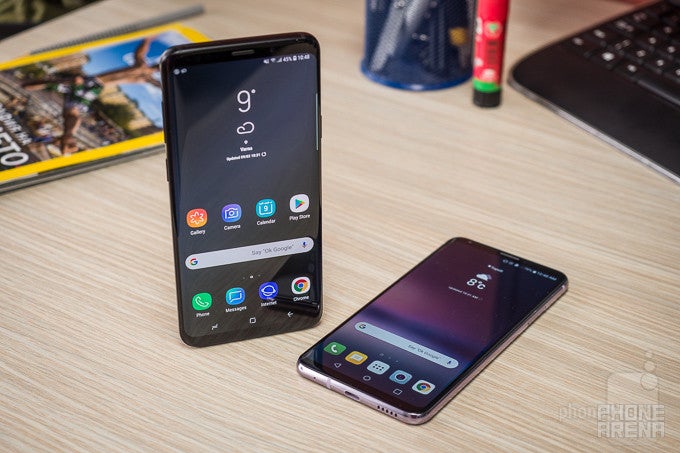
A glance at the Samsung Galaxy S9+ next to the LG V30 wouldn't be enough to pick a favorite. It's just that both have so much in common: immersive OLED displays, dual cameras, glass-on-metal construction, and the list goes on. But while these two Android phones are similar, they're far from identical. Let us walk you through the factors setting them apart.
Design

Glass and metal are the fanciest materials you'll find on a mainstream smartphone right now. They're employed on both the Galaxy S9+ and the LG V30, which results in the undoubtedly premium look and feel of the two devices. Their glass backs shimmer beautifully in the light, while the rigid metal frames hold everything tightly together. Both are also resistant to dust and water ingress, as all premium phones should be nowadays. Just be sure not to drop them. Glass is fragile, you know.
One design difference between the two phones is that Samsung is offering the Galaxy S9+ in a broader range of colors, including lovely shades of blue and purple. In the US, the V30 can only be had in black or silver (pictured here is the purple version that Korea got). The S9+ also comes with a neat – and clickable – home button that is literally under the display itself, while the V30 relies on on-screen virtual buttons only.
Despite the minimal bezels around their screens, the Galaxy S9+ and LG V30 are still quite large physically. They do fit nicely in the palm thanks to their curvy edges and corners, and they do offer plenty of screen space for their physical size, but if you're looking for something compact, you better look elsewhere.
Display
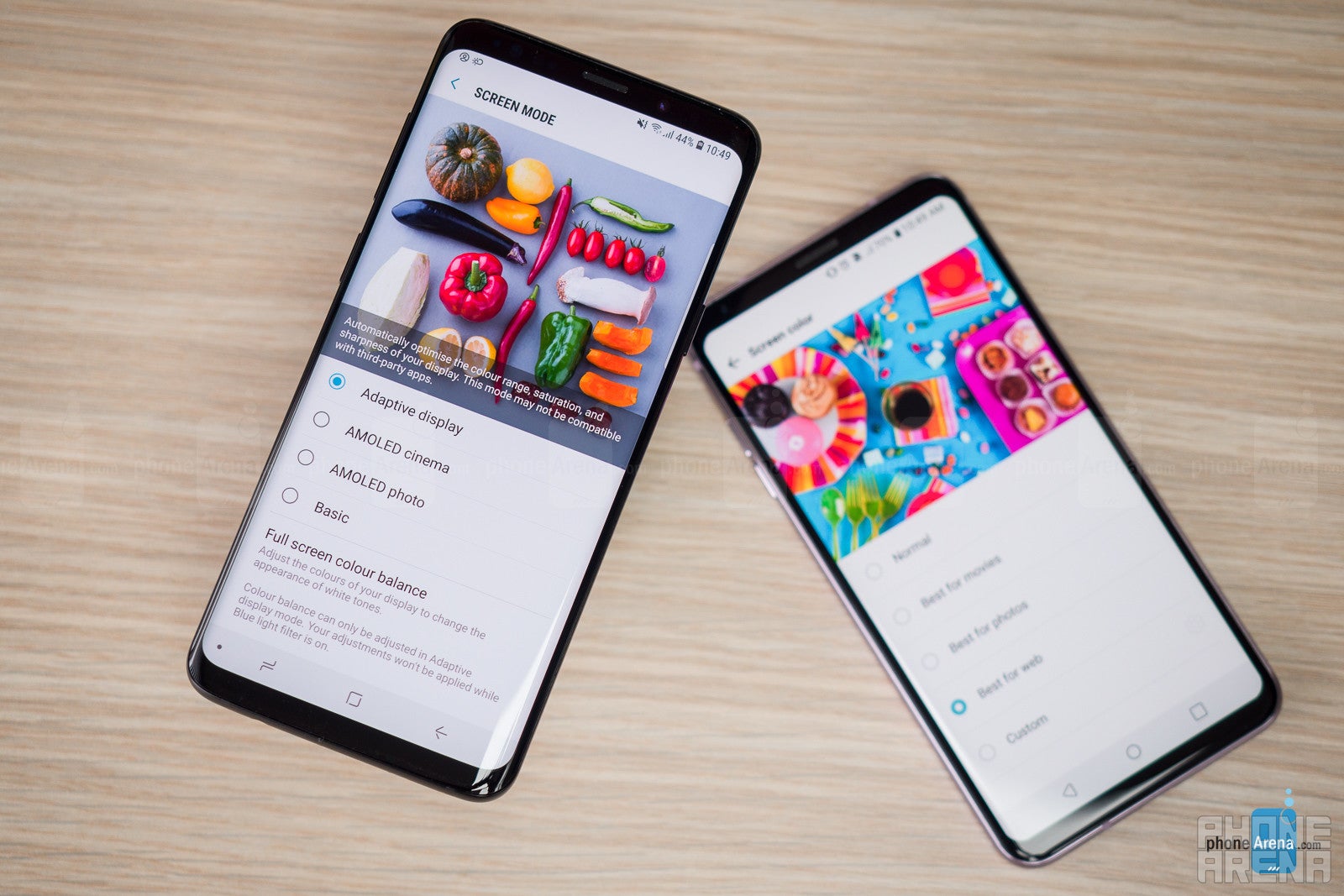
Samsung's displays are among the best you'll find on a smartphone nowadays. The Galaxy S9+'s 6.2-inch OLED display is bright, vivid, and sharp, delivering stunning visuals under any circumstances. We wish we could say the same about the LG V30's 6-inch OLED screen. It isn't bad by any means – it is bright, detailed, and colorful. However, it is held back by imperfections that become noticeable once you take a closer look at it: the uneven brightness, for instance, noticeable when a solid color is displayed on our review unit, or the stark color shifting even when the screen is viewed at a slight angle.
That aside, both screens come with perks you'd expect out of a high-end device. Always-on displays, for instance, are available on both phones, displaying the time and status information while the phones are standing by. Both are also HDR capable, allowing you to stream and enjoy HDR content from Netflix or YouTube.
Software and functionality
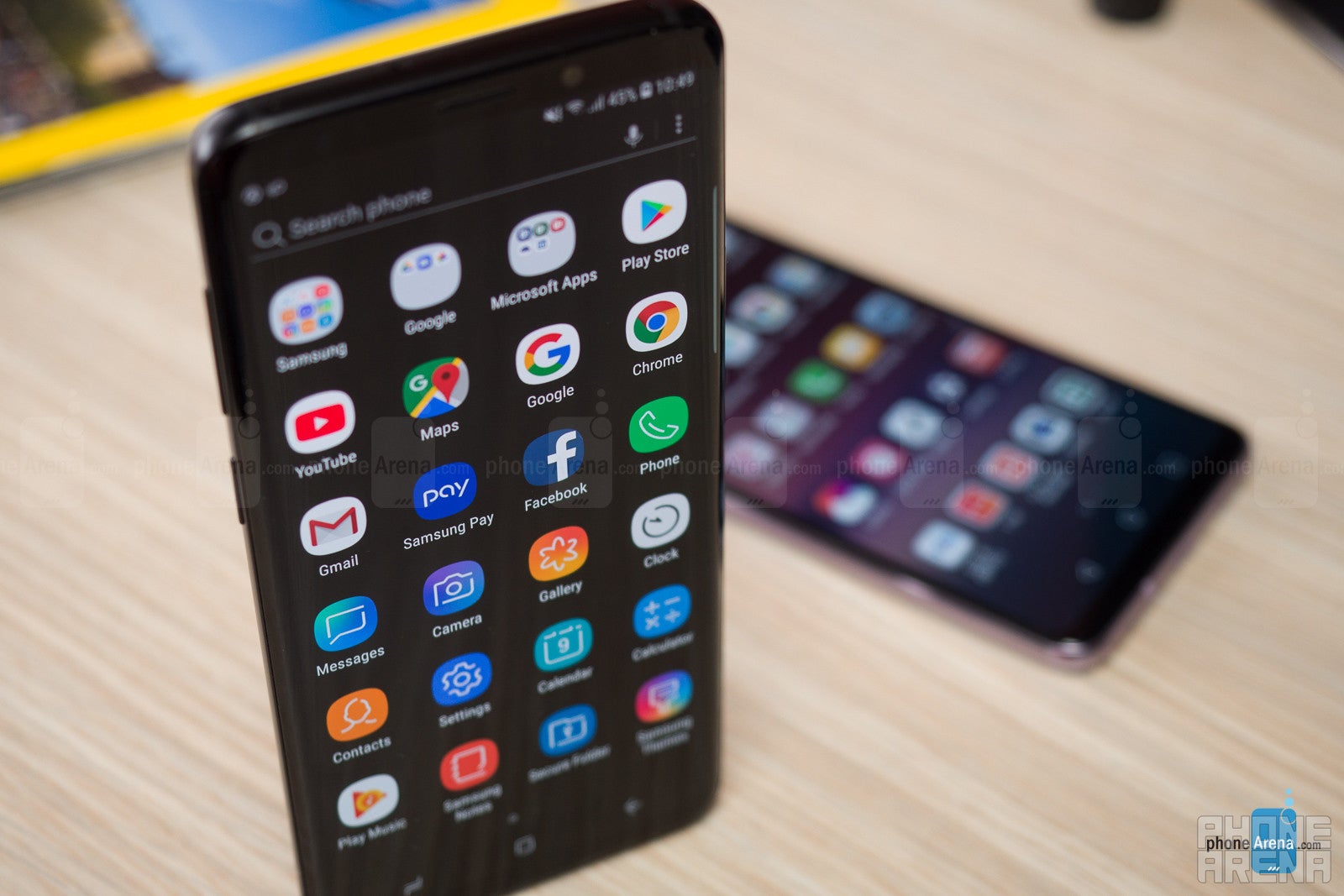
Out of the box, the Galaxy S9+ runs Android 8.0 Oreo, which gives it the lead when it comes to software updates. The LG V30 is only now gradually getting its Oreo treat in the US, adopting new features like picture-in-picture support and more functional app shortcuts.
As far as software goes, there's a lot of things the S9+ and the V30 have in common. For instance, both are highly customizable: they support interface themes, they let you rearrange the on-screen buttons to your liking, they let you adjust the size of the app grid, and the list of options goes on. Both come with virtual assistants: Samsung has Bixby while the V30 relies on Google Assistant. And while Samsung has Edge Screen, where you can place shortcuts and widgets, LG has its Floating Bar which does much of the same.
Samsung takes things further by throwing in its S Health fitness companion, DeX Station support, and AR Emoji virtual avatars. Plus, its Bixby virtual assistant has its own dedicated button, letting you access it easily from any time. So if a maximum number of out-of-the-box features is what you're looking for, the Galaxy S9+ has you covered.
Alas, the Galaxy S9+ is also closer to the point of being overwhelming with all its bells and whistles. The dedicated Bixby button – which is easy to press by accident and can't be set to do anything else – is a prime example of this.
Security and biometrics
As any other modern smartphone, both the Galaxy S9+ and the LG V30 come with fingerprint readers. These are situated at the back, below their cameras. Both are fast, reliable, and easy to reach.
Face recognition is also available as an alternative, but neither phone has it executed perfectly. Since this feature relies on input from the front-facing camera, it only works reliably in good lighting conditions and struggles in the dark.
Samsung has also thrown in an iris scanner on the Galaxy S9+, which does work better in the dark, but has a narrower angle at which it can detect you. In other words, it isn't as reliable and fool-proof as we wish it was.
Performance and memory
There's a Snapdragon 835 inside the LG V30 – the best chip LG had access to at the time of the V30's launch. Being the newer phone, the Galaxy S9+ comes with a newer – and better – silicon under the hood, namely the Snapdragon 845 (or an equally powerful Exynos chip in the international model). As a result, Samsung's phone has a greater amount of computational power, as indicated by the usual set of synthetic benchmarks. In real life, however, we're hard-pressed to see any significant difference between the two. Both phones perform really well in day-to-day tasks, and perhaps only the heaviest of games could truly take advantage of the 845's extra muscle.
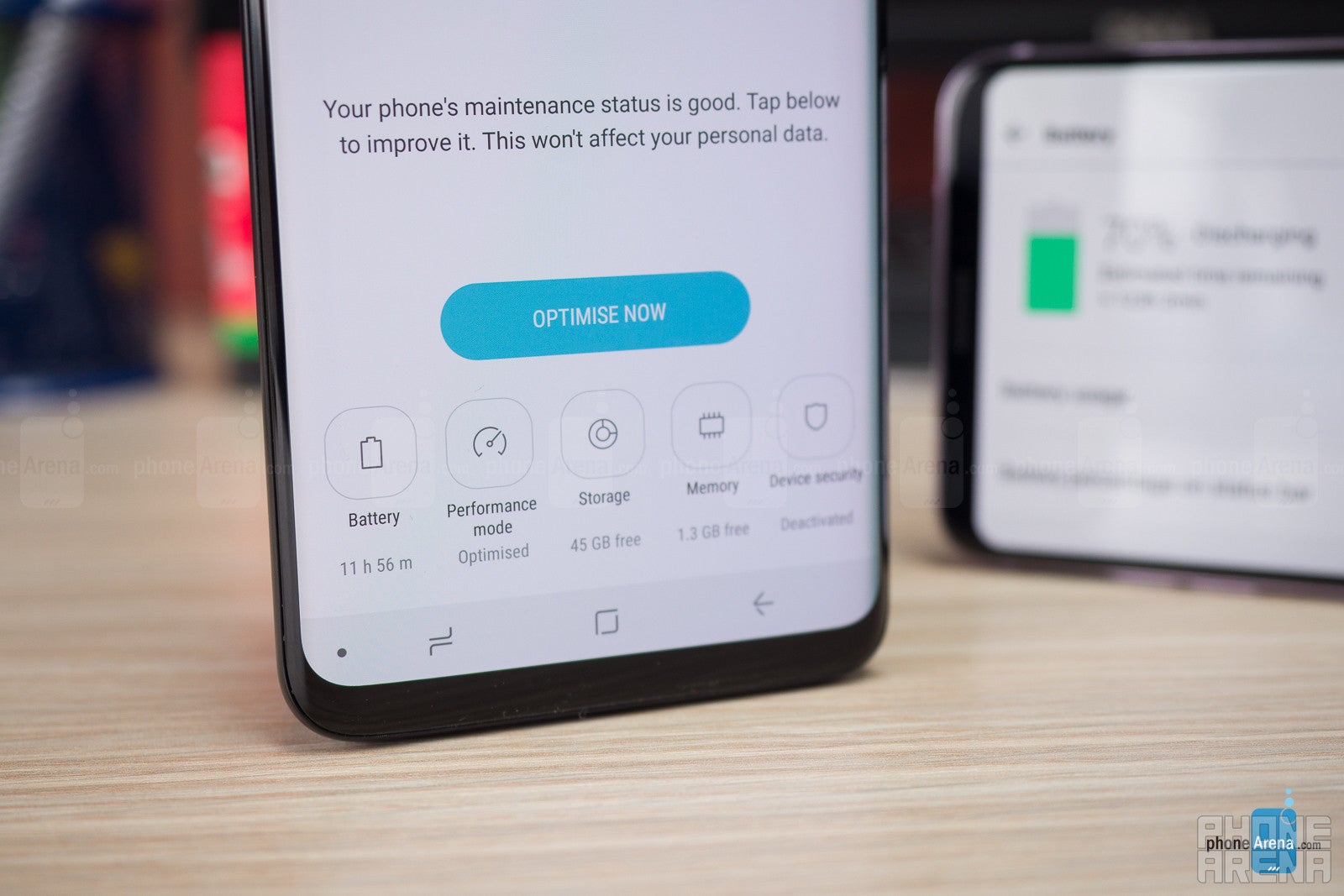
There are 6GB of RAM inside the Samsung Galaxy S9+, as opposed to 4GB in the LG V30. More RAM usually translates to smoother multitasking, but it also makes a phone more future-proof, as apps' demand for resources are always on the rise.
Both the Galaxy S9+ and the LG V30 come with 64GB of on-board storage, which is adequate for a high-end phone, and if you need more of the stuff, both have a microSD card slot at your disposal. (Storage is doubled on the Sprint-exclusive LG V30+ and on the upcoming LG V30S.)
Camera
On the back of the Samsung Galaxy S9+ we have a dual camera setup comprised of a regular, 12MP camera and a 12MP telephoto cam. This arrangement is capable of providing 2x optical zoom and allows background blur (bokeh) effects to be added to the image. Furthermore, the S9+'s main camera has two aperture settings, which is a rarity among smartphones. The camera uses F2.4 in good lighting conditions for improved sharpness, but can go all the way down to F1.5 in low-light scenarios to absorb more light.
LG's camera approach follows the opposite path. On the V30 we find a 16MP standard main camera with fixed 1.6 aperture coupled with a 13MP one with a super-wide viewing angle. The regular camera is ideal for general photography, while the wide-angle one comes in handy if you want to fit more into the frame without having to step back. Bokeh effects aren't available, however.
Image quality
After a quick shootout between the two phones, we can conclude that both perform well if given enough light. But they do perform differently: the Galaxy S9+ tends to go for a warmer color tone, while the V30's images are neutral to slightly blueish in appearance. Also, the Galaxy S9+ tends to handle dynamic scenes better, preserving more detail in the highlights and shadows. On the other hand, it is not uncommon for the LG V30 to deliver a sharper image with a bit more detail when photos are compared at 100% zoom.
In low light, however, the results lean in favor of the Galaxy S9+. While the V30's low-light shots look okay, the S9+ tends to preserve more detail in the shadows and delivers an overall brighter picture. The difference is not dramatic, but it is evident.
As for their secondary cameras, it is impossible to directly compare the Galaxy S9+'s telephoto cam against the V30's wide-angle one since the two have the exact opposite applications. But we can say that they both come in handy from time to time. Don't expect these to be your main shooters as they're less sensitive to light.
Selfies
Somewhat similar is the case when it comes to front-facing camera performance. In broad daylight, both the Galaxy S9+ and the LG V30 can snap decent self-portraits. While the S9+ produces better detail, the V30's wide-angle selfie cam can fit more people in the frame, which could be useful in tricky situations. But in low light, the Galaxy S9+ tends to deliver clearer images.
Video
The LG V30 is marketed as a phone that excels when it comes to video recording. Indeed, its 4K videos do look good, but the Galaxy S9+'s 4K footage is stabilized better and has clearer sound. In addition, the Galaxy S9+ has more reliable autofocus and supports 60fps 4K recordings for even smoother motion. Videos out of the front-facing camera of the Galaxy S9+ also look better thanks to the camera's wider dynamics range, meaning that bright and dark areas are better exposed.
Multimedia
The Galaxy S9 and S9+ are the first Galaxy S-series phones to feature stereo speakers. They are not necessarily the loudest we've ever heard, but the sound they produce is rich, clear, and with enough separation between the two channels. The LG V30's single bottom-firing loudspeaker is sufficiently loud, but the sound quality leaves us wanting more.
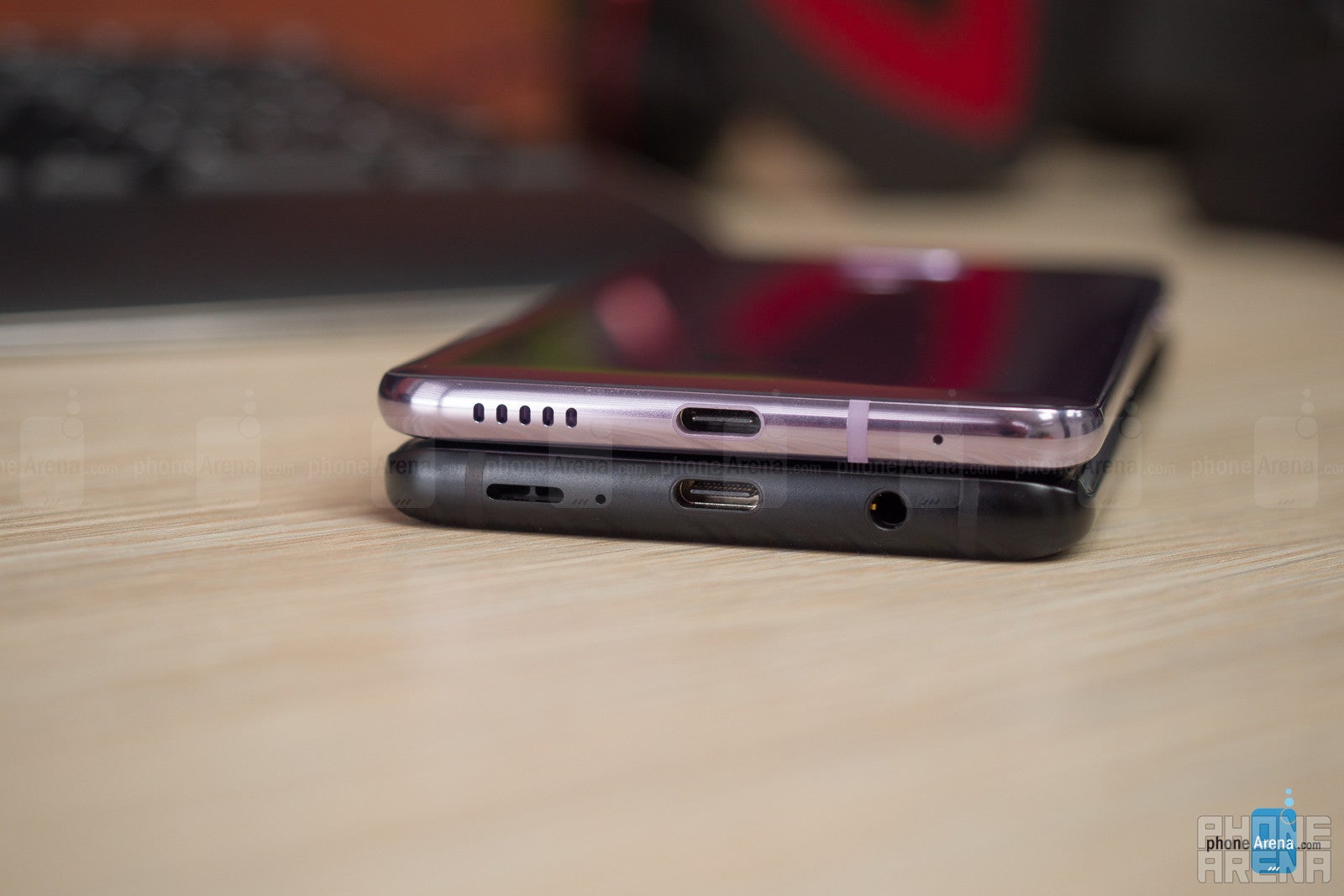
Battery Life
A phone's battery life depends not only on how much charge it can hold, but also on how that charge is being consumed. In our case, we have the LG V30, holding a 3300mAh battery, outpacing the Galaxy S9+ and its 3500mAh cell by a considerable margin in our custom battery benchmark test. In reality, both phones should be perfectly capable of lasting through a day of normal usage, but the V30 would have an easier time taking you beyond that. To improve the battery life on either, consider disabling the always-on display feature.
Both the LG V30 and the Galaxy S9+ come with rapid chargers in the box, capable of refilling their cells in next to no time. Both support wireless charging as well, but only the Galaxy S9+ supports quick wireless charging through a compatible charging pad.
Conclusion
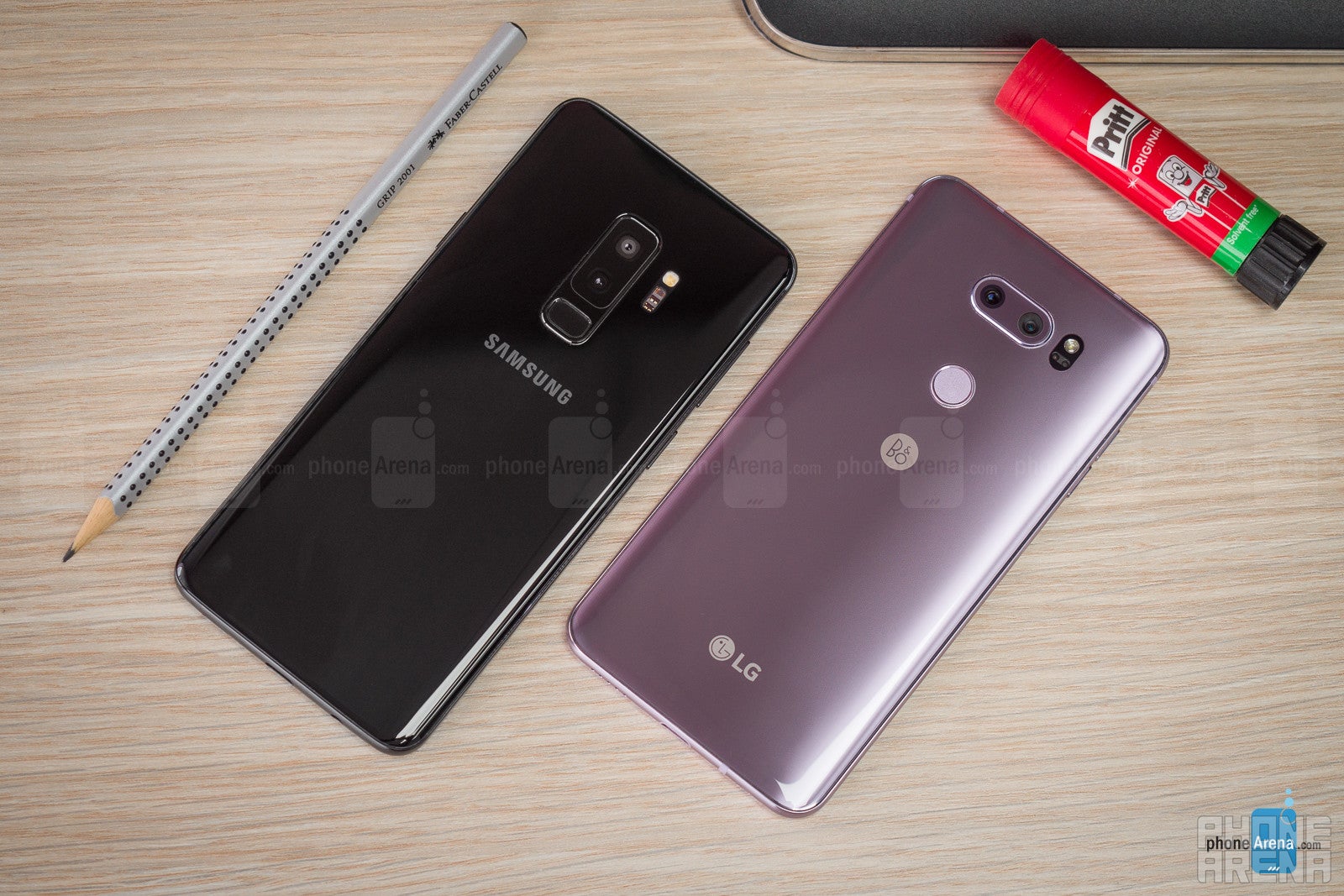
As we mentioned in the beginning, the Galaxy S9+ and the LG V30 seem very similar on the surface. However, there are many things that separate the two, and a $100 price gap is one of them. Right now, the LG V30 can be yours for about $800, while the Galaxy S9+ costs around $900.
But you know what, if you're in the market for a large-screen, high-end Android smartphone, spending those extra $100 on the Galaxy S9+ would be worth it. Sure, the LG V30 is a good phone, but Samsung's offering tops it in a number of areas, including display quality, camera performance, and raw processing power.
On the other hand, the LG V30 is likely to last you longer between charges, all while being just as fast with day-to-day activities. But all things considered, the LG V30 would be worth picking over the Galaxy S9+ only after a considerable discount.
Samsung Galaxy S9+
Pros
- Better photo and video quality
- More camera modes, including bokeh effects and Super Slow-motion
- More processing power
- Higher-quality screen
- Great stereo speakers
LG V30
Pros
- Costs less
- Wide-angle cameras can be useful
- Better battery life
- Comes with 2-year warranty in the US
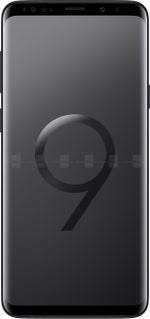















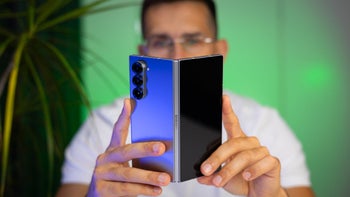











Things that are NOT allowed: